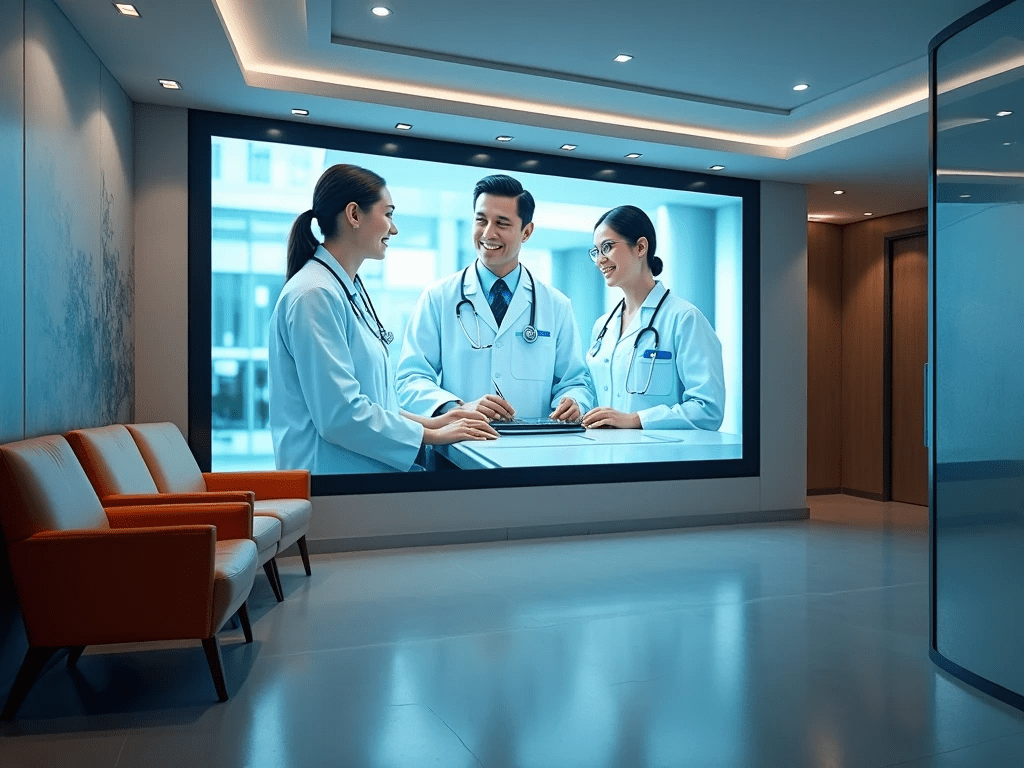Hospital Lobbies
The lobby is the first point of contact for patients and visitors in a hospital. LED screens placed here can be utilized for various purposes, such as:
What It can display:
- Foreign patients’ welcome messages in multiple languages.
- Emergency contact numbers and first-aid guidelines.
- Videos presenting doctors and their specialties.
Upcoming events at the hospital, health camps, and blood donation camps. - Live news or health updates (moderated).


